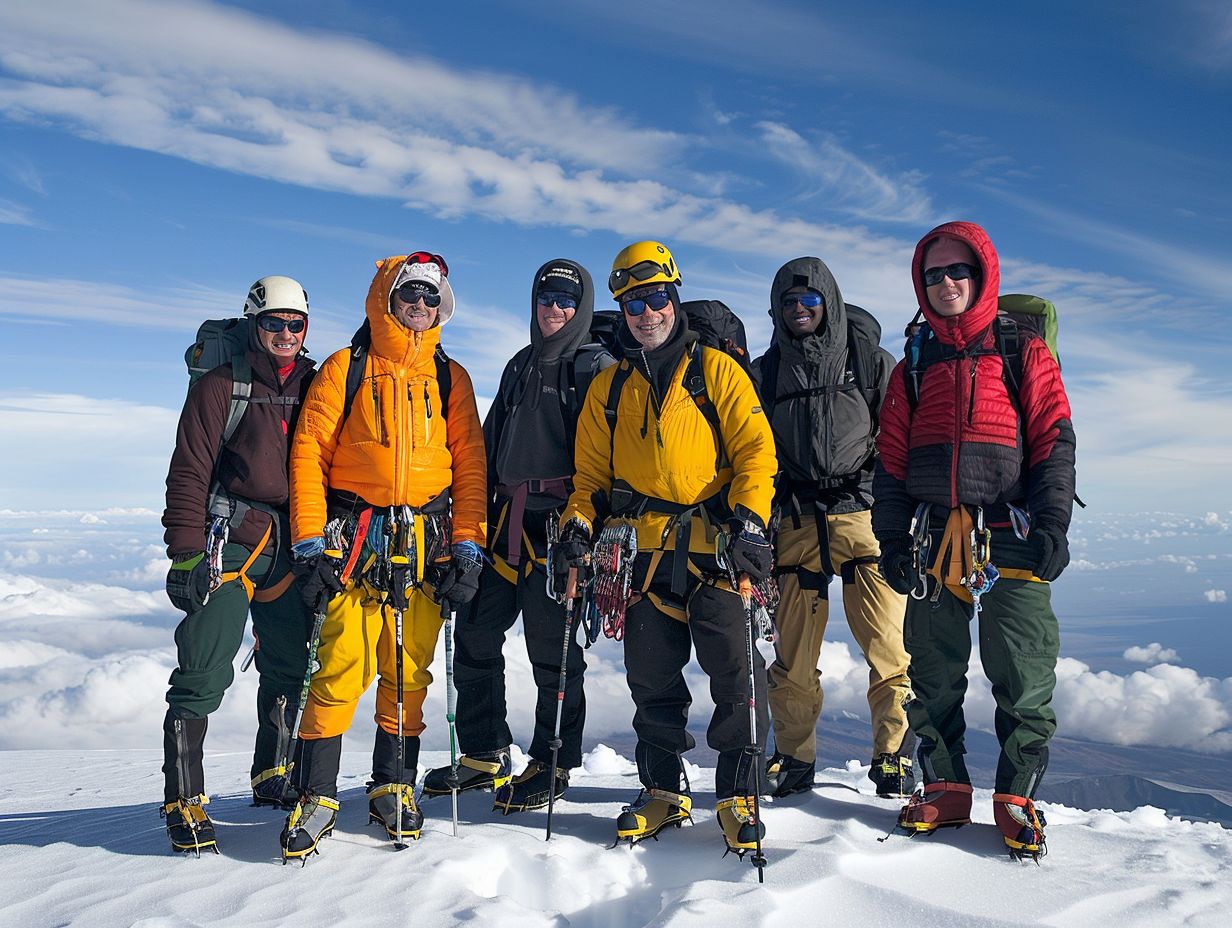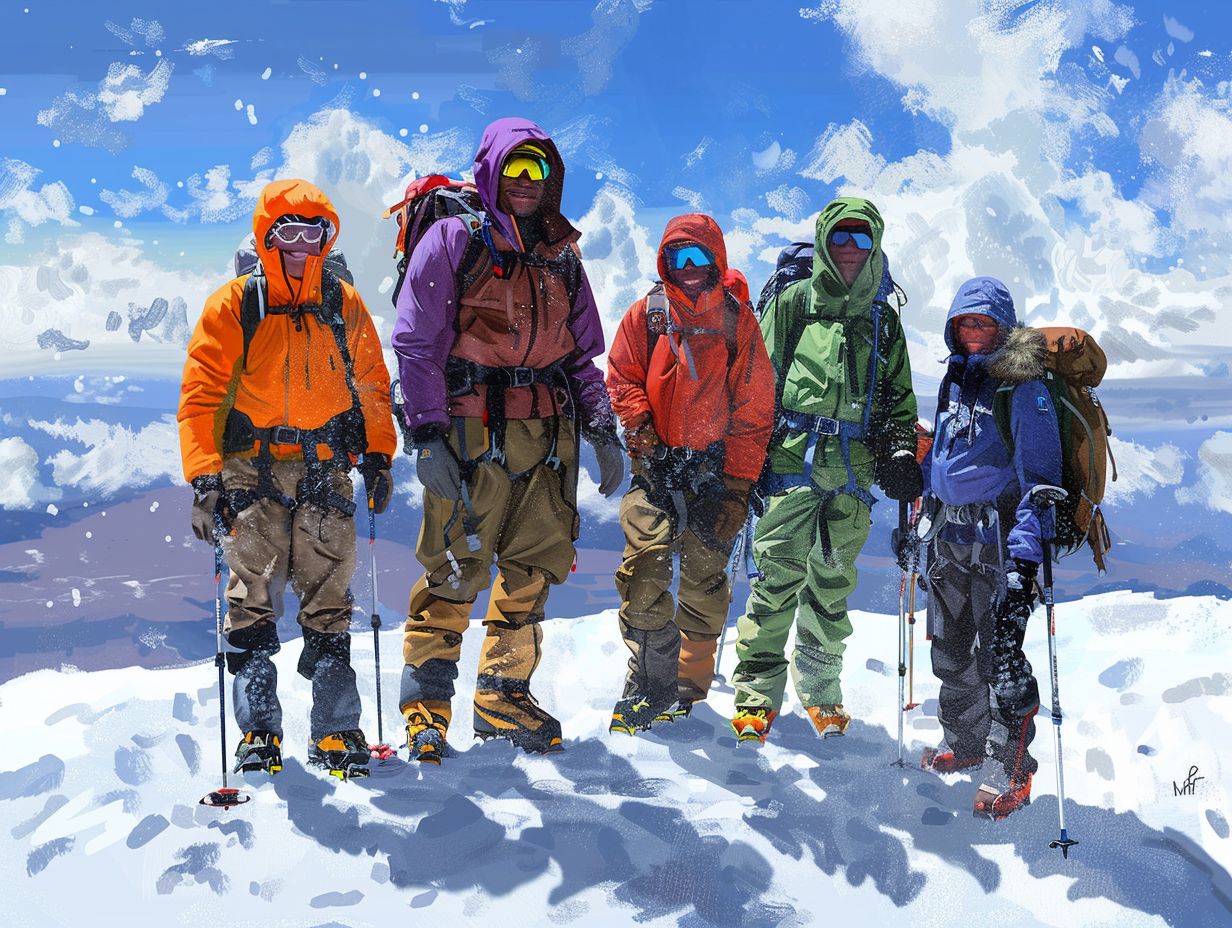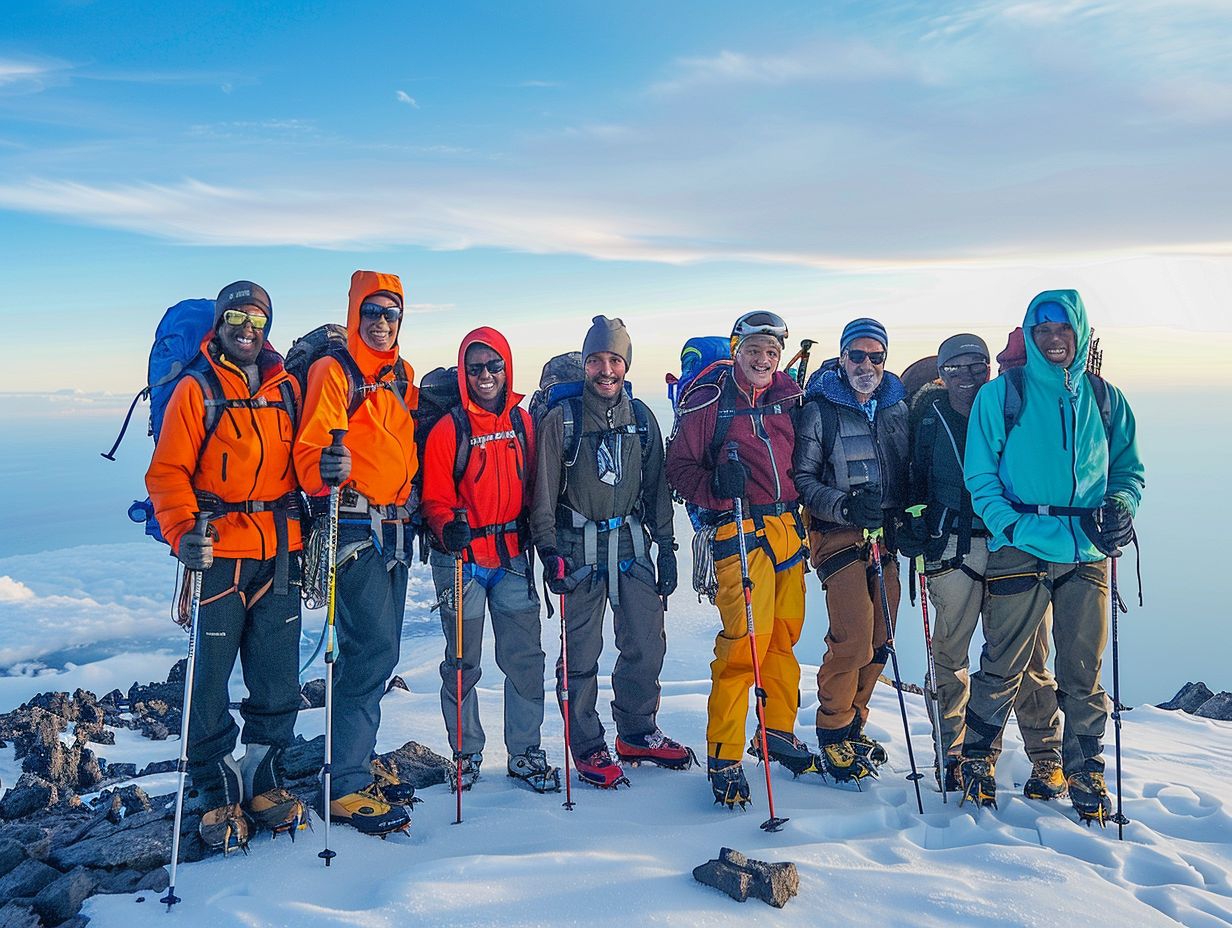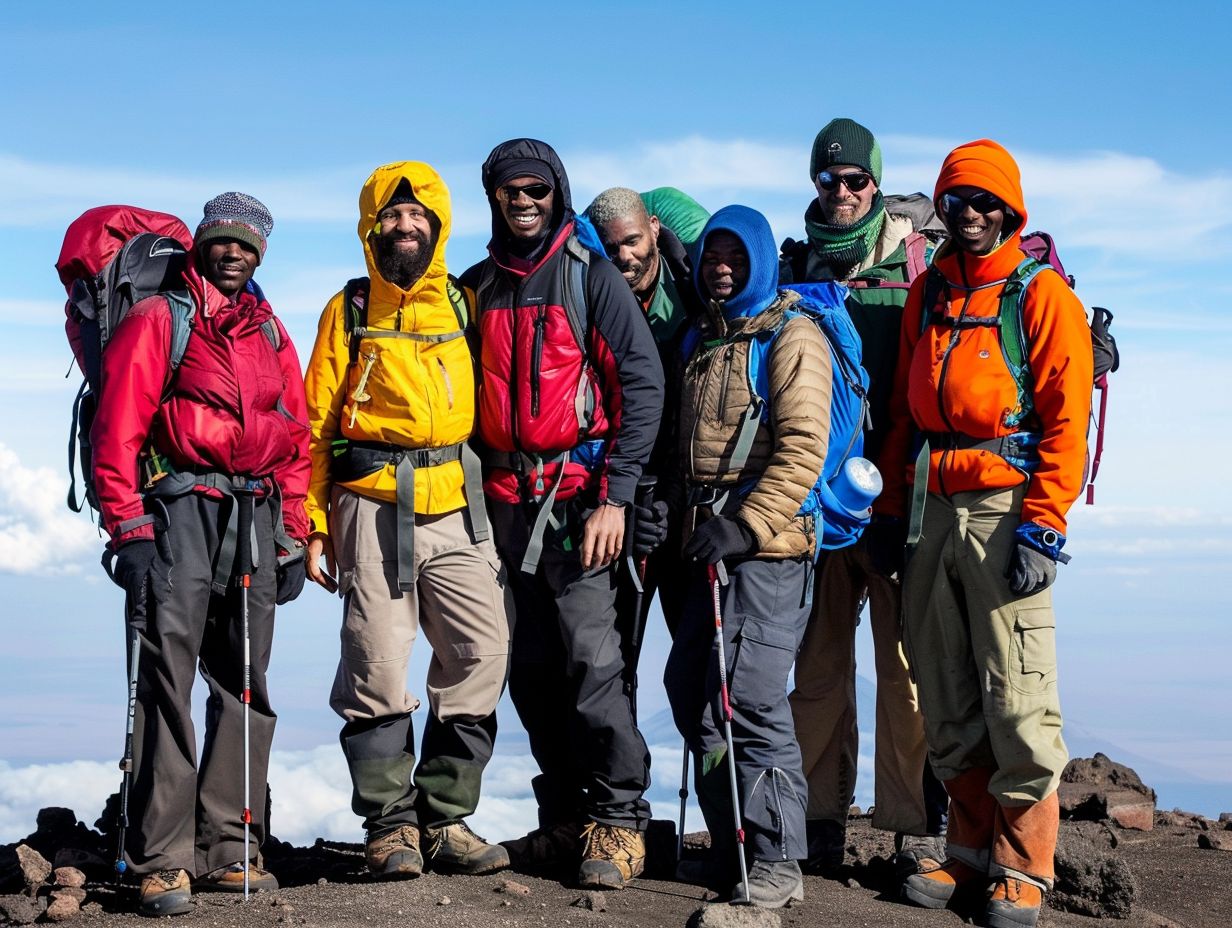
Kilimanjaro Safety
Are you planning to climb Mount Kilimanjaro? Before you embark on this adventure, it’s important to understand the potential dangers and how to ensure your safety throughout the journey. From altitude sickness to extreme weather conditions, there are several factors that make Kilimanjaro a challenging climb.
In this article, we will discuss what makes Kilimanjaro dangerous, how to prepare for the climb, safety measures to follow, and what to do in case of an emergency. Lace up your boots and let’s get started!
Key Takeaways:

- Proper physical preparation is crucial to ensure safety while climbing Kilimanjaro.
- Hiring a licensed guide and choosing a reliable tour company are key safety measures to consider when planning a Kilimanjaro climb.
- In case of an emergency, immediate action and following the proper evacuation procedures can save lives on Kilimanjaro.
What Makes Kilimanjaro Dangerous?
Kilimanjaro, the highest mountain in Africa, is considered dangerous due to the risks associated with high altitude and extreme weather conditions. Climbers face the challenges of altitude sickness, unpredictable weather, and demanding physical conditions.
Altitude-related risks pose a significant threat on Kilimanjaro, with climbers susceptible to Acute Mountain Sickness (AMS) resulting from the rapid ascent. Symptoms of AMS include headaches, nausea, dizziness, and fatigue, which can escalate quickly in severe cases.
Safety precautions such as gradual acclimatization, proper hydration, and timely descent play a crucial role in mitigating these risks. Professional guides, experienced in recognizing AMS symptoms and adept at emergency protocols, are essential on the mountain to ensure climbers’ safety. Climbers must be prepared for the potential health risks associated with high altitudes, such as pulmonary or cerebral edema.
-
Altitude Sickness:
Altitude sickness, also known as acute mountain sickness (AMS), is a common condition among climbers at high altitudes. It results from the body’s struggle to adapt to decreased oxygen levels at higher elevations.
When ascending to higher altitudes too quickly, the body may not have the chance to acclimatize properly, leading to the onset of altitude sickness. Symptoms can vary from mild headaches and fatigue to severe cases of pulmonary or cerebral edema.
For prevent altitude sickness, climbers should follow recommended acclimatization guidelines, such as gradual ascent and spending extra time at designated intermediate altitudes. Maintaining proper hydration levels and consuming a balanced diet can support the body’s adaptation to lower oxygen levels.
-
Extreme Weather Conditions:
The extreme weather conditions on Kilimanjaro can pose significant risks to climbers, including sudden temperature drops, snowstorms, and high winds. These conditions can make the climb challenging and sometimes dangerous, especially in remote locations.
-
Physical Demands of the Climb:
Climbing Kilimanjaro demands a high level of physical fitness and endurance. The trek requires climbers to navigate varying terrains, face steep ascents, and endure long hours of trekking at high altitudes.
Proper training regimens before attempting the climb are essential. This includes cardiovascular exercises to build endurance, strength training for leg and core muscles, and hiking practice to prepare for long hours of walking. Climbers must also acclimate their bodies to the altitude by gradually increasing their elevation exposure.
Essential equipment such as proper footwear, layered clothing, a sturdy backpack, and high-altitude gear are crucial for a successful summit. Regular health checks to monitor oxygen levels and symptoms of altitude sickness are necessary to prevent serious health risks. Mental preparedness is equally important as climbers face physical challenges amidst stunning landscapes.
How to Prepare for Climbing Kilimanjaro?

Preparing for a Kilimanjaro climb involves thorough physical and mental preparation. Acclimatization, proper gear selection, and physical training are crucial to ensure a safe and successful ascent.
Begin acclimatization by spending a few days in Moshi to adjust to the altitude. Slow and steady ascent is key to prevent altitude sickness. Choose high-quality gear like sturdy hiking boots, warm clothing, a reliable backpack, and a comfortable sleeping bag. Consider altitude training through hiking at high altitudes to prepare your body for the challenge.
Focus on cardiovascular fitness, strength training, and flexibility to enhance your physical endurance. Prioritize your health by staying hydrated, eating nutritious meals, and getting enough rest. Consult with experienced climbers or guides for personalized advice and support.
-
Get in Shape:

Getting in shape is vital for a Kilimanjaro climb. Climbers should focus on cardiovascular fitness, strength training, and endurance exercises to prepare their bodies for the physical demands of high-altitude trekking.
Cardiovascular fitness is crucial as it helps improve heart and lung function, enabling climbers to cope with the decreased oxygen levels at high altitudes. Incorporating activities like running, cycling, or swimming can boost aerobic capacity.
Strength training, such as weightlifting or bodyweight exercises, is essential for building muscle mass and enhancing overall strength to handle the challenging terrain on the mountain. Endurance exercises like long hikes or stair climbing are beneficial for increasing stamina during prolonged treks in high altitudes.
-
Acclimatize Properly:
Proper acclimatization is essential to prevent altitude sickness on Kilimanjaro. Climbers should gradually ascend, stay hydrated, and monitor their oxygen saturation levels to adapt to the high altitude.
Altitude acclimatization is a gradual process that allows the body to adjust to decreased oxygen levels at higher elevations, minimizing the risk of altitude-related illnesses like Acute Mountain Sickness (AMS). By ascending slowly, climbers give their bodies time to produce more red blood cells and increase oxygen-carrying capacity.
It is also crucial to maintain hydration at all times to combat dehydration, a common issue at high altitudes that can worsen AMS symptoms. Monitoring oxygen saturation levels using a pulse oximeter helps individuals track their adaptation progress and detect any potential issues early on.
-
Pack the Right Gear:
Packing the right gear is crucial for a successful Kilimanjaro climb. Essential equipment includes proper clothing, sturdy footwear, medical kits, oxygen supplies, and a pulse oximeter to monitor oxygen levels.
When gearing up for your Kilimanjaro adventure, make sure to pack moisture-wicking base layers to regulate body temperature and protect against frostbite. Insulated jackets and waterproof outer shells are vital for coping with the cold and unpredictable mountain weather. Quality hiking boots with ankle support are a must to navigate challenging terrains.
It’s also wise to carry a comprehensive first aid kit containing essentials like bandages, antiseptic wipes, and blister treatment. Oxygen tanks and masks serve as life-saving companions in case of altitude sickness emergencies, especially at higher elevations.
What are the Safety Measures on Kilimanjaro?
Ensuring safety on Kilimanjaro involves following specific guidelines and utilizing experienced guides. Climbers should choose reputable operators, adhere to safety protocols, and take necessary precautions to mitigate risks.
Choosing a professional and knowledgeable guide service is essential for a successful and safe climb on Kilimanjaro. These experienced guides are well-versed in the terrain, weather conditions, and emergency procedures, offering invaluable support throughout the expedition.
Climbers must prioritize physical fitness and acclimatization to prevent altitude sickness and other related health issues. Packing essential gear, such as proper clothing, footwear, and safety equipment, is crucial to handle the challenging conditions on the mountain.
By carefully selecting a reputable operator that prioritizes safety, climbers can embark on this incredible adventure with confidence and peace of mind.
-
Hiring a Licensed Guide:
Hiring a licensed guide is crucial for the safety of climbers on Kilimanjaro. Guides provide essential support, care, and expertise, ensuring climbers follow safety protocols and maintain proper acclimatization.
Guides play a critical role in monitoring the physical and mental well-being of climbers throughout the ascent. They are responsible for assessing any signs of altitude sickness, implementing necessary precautions, and making informed decisions for the group’s safety.
Licensed guides possess in-depth knowledge of the routes, weather conditions, and emergency procedures, enhancing the overall climbing experience and reducing risks. Choosing a licensed guide ensures compliance with established regulations and fosters a culture of environmental stewardship on Kilimanjaro.
-
Choosing a Reliable Tour Company:
Selecting a reliable tour company is essential for a safe Kilimanjaro expedition. Reputable operators offer experienced guides, safety precautions, emergency protocols, and quality services for climbers.
Experienced guides play a crucial role in ensuring climbers have the necessary support and knowledge throughout the trek, increasing the chances of a successful summit.
Safety precautions implemented by reputable firms help mitigate risks associated with high-altitude climbing, such as altitude sickness and extreme weather conditions. These companies have established emergency protocols, including evacuation procedures, to promptly address any health issues or accidents that may occur during the ascent.
-
Following the Rules and Regulations:

Adhering to the rules and regulations set for Kilimanjaro climbers is essential to ensure everyone’s safety. These protocols help prevent accidents, manage risks, and maintain the overall safety of climbers on the mountain.
One of the key aspects of safety regulations on Kilimanjaro is the requirement for climbers to undergo thorough acclimatization to the high altitude. This process not only helps in preventing altitude sickness but also ensures that climbers are physically prepared for the challenges ahead. Following the guidance on proper equipment and clothing is crucial to protect against extreme weather conditions that can be encountered on the mountain.
What to Do in Case of an Emergency on Kilimanjaro?
In case of an emergency on Kilimanjaro, immediate action is crucial. Recognizing altitude sickness symptoms, seeking help from guides, and following emergency evacuation procedures are vital steps to ensure climbers’ safety.
Altitude sickness, also known as acute mountain sickness, can manifest through symptoms such as headache, dizziness, nausea, and fatigue. When experiencing these signs, climbers should communicate with their guides immediately for guidance. Guides play a pivotal role by assessing the situation, initiating rescue procedures, and providing necessary support.
In emergency scenarios, guides facilitate communication with rescue teams, coordinate evacuation efforts, and ensure climbers receive essential medical care. The use of emergency oxygen can be crucial in managing altitude-related health issues, aiding in stabilizing climbers’ conditions before further assistance arrives.
-
Recognize the Signs of Altitude Sickness:
Recognizing the signs of altitude sickness is crucial for climbers on Kilimanjaro. Symptoms such as headache, nausea, and dizziness require immediate attention and proper care to prevent serious health complications.
Additional symptoms of altitude sickness may include fatigue, shortness of breath, and loss of appetite. It’s important to be aware of these signs as they can progress to more severe stages if not addressed promptly.
Altitude sickness, also known as Acute Mountain Sickness (AMS), can lead to pulmonary edema or cerebral edema, both of which are life-threatening conditions that demand urgent medical intervention.
When climbing at high altitudes, climbers should acclimatize properly, stay hydrated, and not ascend too quickly to reduce the risk of developing AMS.
-
Descend Immediately if Necessary:
If climbers experience severe altitude sickness symptoms, immediate descent is imperative for their safety. Descending to lower altitudes can help alleviate altitude-related health issues and reduce the risk of serious complications.
Lowering the altitude helps to increase oxygen levels in the body, which can significantly benefit those suffering from altitude sickness. It allows the body to acclimatize more effectively, relieving symptoms such as dizziness, nausea, and headaches caused by lack of oxygen.
- Descending promptly is crucial to prevent potentially life-threatening conditions like high altitude pulmonary edema or cerebral edema.
- In emergency situations, rescue operations play a vital role in ensuring climbers are safely brought down to lower elevations for proper treatment.
-
Seek Help from Your Guide and Team:
In emergencies, climbers should seek immediate assistance from their guides and team members. Guides are trained to handle altitude sickness cases and coordinate rescue efforts to ensure climbers’ well-being.
Team members are essential in supporting each other and maintaining morale during challenging situations, fostering a sense of unity and teamwork crucial for survival.
Guides play a pivotal role in assessing the situation, providing necessary medical aid, and making critical decisions swiftly. Effective communication among team members and guides is key in devising rescue plans and executing them efficiently. Consulting the guides and team members ensures that climbers receive prompt assistance and appropriate care, increasing the chances of a successful outcome in emergency scenarios.
-
Follow the Emergency Evacuation Procedures:
During emergencies on Kilimanjaro, climbers must adhere to established emergency evacuation procedures. These protocols help expedite rescue operations, minimize risks, and ensure timely medical assistance for affected climbers.
When a climber encounters an emergency, the first step is to stay calm and assess the situation. It is crucial to inform the designated authorities immediately, providing details of the location, nature of the emergency, and the number of individuals involved.
While waiting for help, climbers should position themselves in a safe area, away from potential hazards. If possible, provide first aid to the affected person following basic medical intervention guidelines.
Remember, cooperation with rescue teams is vital in ensuring a successful evacuation. Follow their instructions, stay alert, and maintain communication to facilitate a smooth and efficient rescue operation.
Frequently Asked Questions:
1. Is it safe to climb Mount Kilimanjaro?
A: Yes, it is generally safe to climb Mount Kilimanjaro if proper precautions are taken and a reputable tour operator is used.
2. What are some safety precautions to take when climbing Mount Kilimanjaro?
A: Some safety precautions to take when climbing Mount Kilimanjaro include properly acclimatizing, staying hydrated, hiring a professional guide, and following their instructions.
3. What is the best time of year to climb Mount Kilimanjaro?
A: The best time of year to climb Mount Kilimanjaro is during the dry seasons of January to March and June to October, as weather conditions are more stable and there is less chance of rain or snow.
4. What are the risks of climbing Mount Kilimanjaro?
A: Some risks of climbing Mount Kilimanjaro include altitude sickness, extreme weather conditions, and physical exhaustion. It is important to be aware of these risks and take necessary precautions.
5. What should I do if I encounter a safety issue while climbing Mount Kilimanjaro?
A: If you encounter a safety issue while climbing Mount Kilimanjaro, immediately inform your guide and follow their instructions. They are trained to handle such situations and will prioritize your safety.
6. Is travel insurance necessary for climbing Mount Kilimanjaro?
A: Yes, it is highly recommended to have travel insurance that covers mountaineering activities before climbing Mount Kilimanjaro. This will provide coverage for any unexpected emergencies or incidents that may occur during your climb.